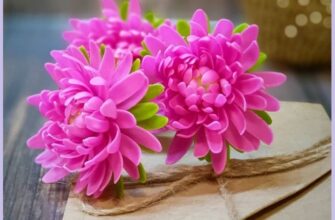Polymer clay is a versatile and popular material used by artists and crafters to create a wide range of projects. To ensure that your polymer clay creations are strong, durable, and long-lasting, it’s important to properly harden or cure them. In this article, we’ll explore various methods and techniques to permanently harden polymer clay and achieve the best results.
1. Baking Polymer Clay
Basic Baking Process:
Understanding the fundamentals of baking polymer clay:
The most common method for hardening polymer clay is by baking it in an oven. Preheat your oven to the temperature specified by the manufacturer of the clay (usually between 230°F to 275°F or 110°C to 135°C). Place your polymer clay creation on a baking surface, such as a ceramic tile or baking sheet, and bake it for the recommended time (typically 15-30 minutes per 1/4 inch or 6mm of thickness). Avoid overbaking, as it can lead to discoloration or burning.
Use an Oven Thermometer:
Ensuring accurate temperature for proper curing:
Oven temperatures can vary, so it’s recommended to use an oven thermometer to ensure that the temperature remains consistent and accurate. This helps prevent underbaking or overbaking, which can impact the hardness and strength of the polymer clay.
2. Checking for Proper Curing
Bend Test:
Verifying the hardness of polymer clay:
After baking, allow the polymer clay to cool completely before testing its hardness. Gently bend the clay or press your fingernail against it. Properly cured polymer clay should not easily bend or leave an indentation. If the clay is still slightly flexible or soft, it may require additional baking time.
3. Layering and Support
Thin Layers and Armatures:
Building strength through proper construction:
If you’re working with thin or delicate sections of polymer clay, consider layering the clay or using armatures to add support. Thicker layers of clay are generally more durable and less likely to break, so plan your project accordingly to ensure sufficient thickness in vulnerable areas.
4. Sanding and Buffing
Sanding for Smoothness:
Enhancing the finish and hardness of polymer clay:
After baking, you can further improve the appearance and hardness of polymer clay by sanding and buffing it. Use fine-grit sandpaper to gently sand the surface, smoothing out any imperfections or rough areas. Follow up with buffing using a soft cloth or a polishing tool to achieve a smooth, glossy finish.
5. Conclusion
Permanently hardening polymer clay is essential for ensuring the strength, durability, and longevity of your creations. By following proper baking techniques, checking for proper curing, adding support to thin sections, and considering post-baking finishing methods, you can achieve polymer clay projects that are not only beautiful but also resilient. With a little care and attention to detail, you’ll be able to enjoy your polymer clay creations for years to come.
